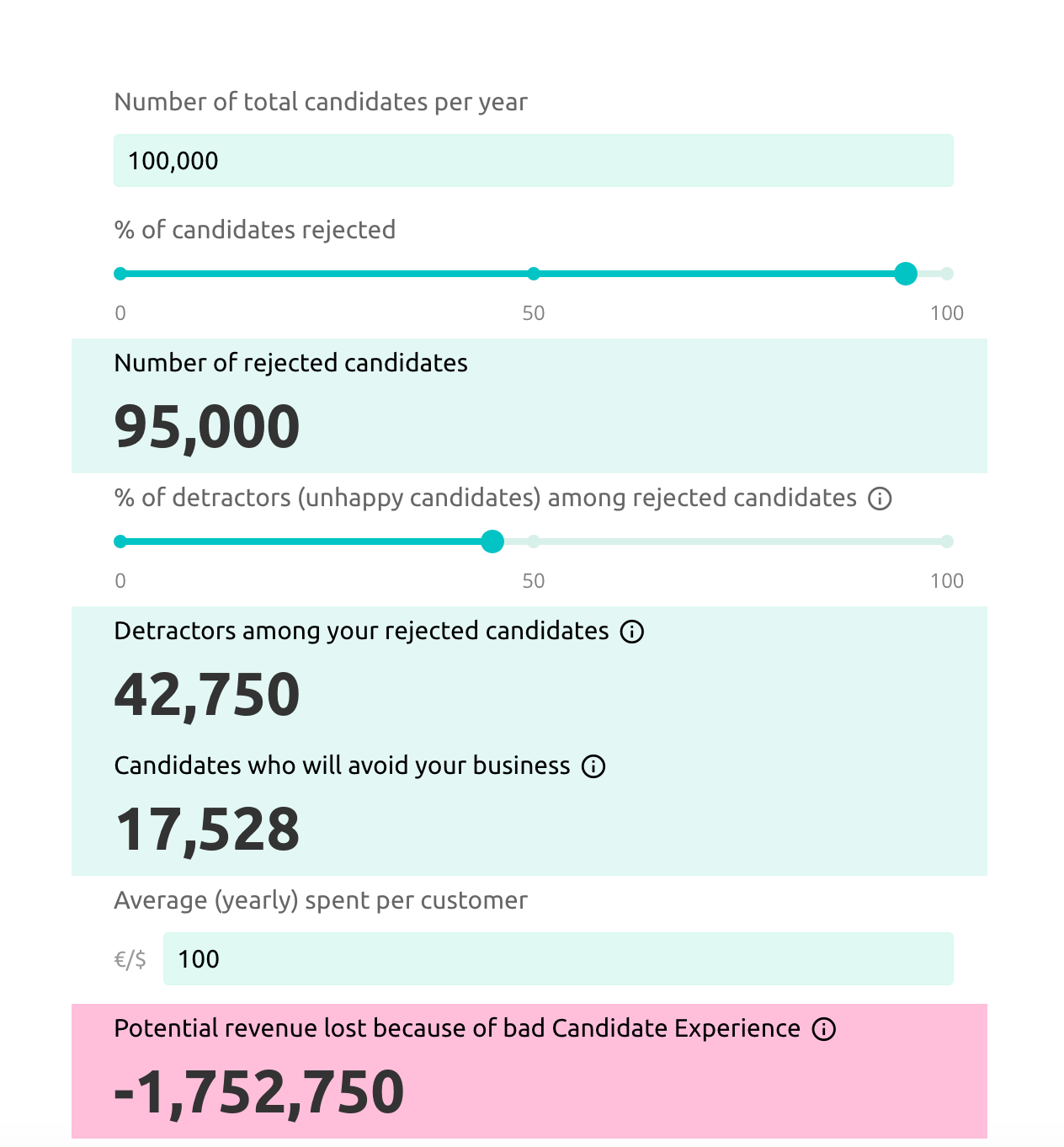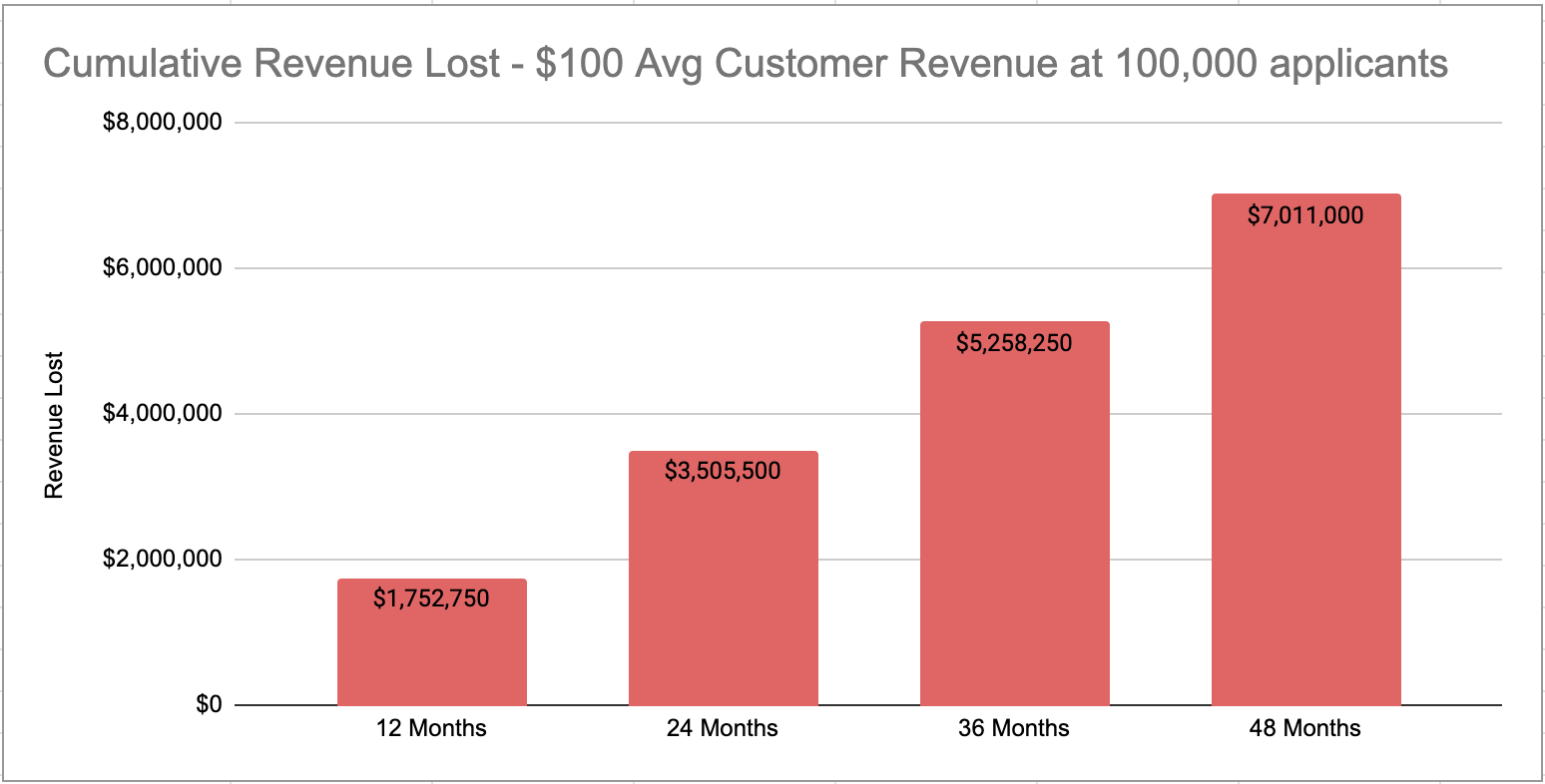Rekt Revenue: Application Volume Impact on Consumer Businesses
If the majority of your candidates are also your business's target customer, listen up. 📣
Most recruiting teams operate with the belief that the more applications we receive the better.
Everyone who works in recruiting knows that at least 90% of candidates are rejected and for companies that are well known and have even higher candidate interest, that number can exceed 99% of candidates.
Data and our personal experiences show us that being rejected doesn't feel good. It doesn't inspire us to reengage with that company or person in the future. They have kicked us out of the tribe.
Many businesses neglect the fact that their candidates (and their families and friends) are also their customers, and that their Candidate Experience has a strong impact on whether they would buy from you in the future. -Mark Berendsen
Mark's entire article is highly recommended reading to understand the full idea of the negative business impact from a poor candidate experience.
Posting a role and allowing anyone to apply is the status quo of hiring.
I am very optimistic that we'll have practices and tools that will enable candidates to better self-select out or control their own path forward*. I'm not sure we're there yet.
Are Your Candidates Potential Customers?
If your candidates could be a buyer or recommender of your products or services, this next part is for you.
Starred says 45% of rejected candidates are detractors. 😞 These candidates are dissatisfied and highly likely to avoid your business and tell others to do the same.
Knowing this and our need to move away from being considered a cost center and seen as a strategic business partner, we must understand recruiting's impact on the entire business.
Starred has a candidate experience cost calculator found here. You'll need to know:
- What is your average revenue per customer?
- How many applications do you receive each year?
- How many hires do you make each year?
This will give you the total revenue lost in the first 12 months of that candidate rejection.
Let's walk through an example.
100,000 candidates a year with a 95% rejection at $100/revenue per average customer.

Your hiring practices have potentially negatively impacted company revenue by $1,752,750 and that is just within the first 12 months from rejection. This detractor impact runs cumulatively and thus in 2025 the company will see this revenue impact compound. 😰 📉

While the marketing team is adjusting 15 different levers to capture an additional $1, the recruiting team is making the money printer go brrrrrrr in lost revenue to capture that "someday," yet always elusive CRM**.
Recommended next steps:
- Understand the revenue impact on your business based on your candidate strategy.
- Be very specific about the necessary skills and requirements in your job description.
- Leverage knock-out questions (and potentially make it clear to the applicant they will be rejected based on certain requirement responses, so they self-select out.)
Questions to ponder:
- Is a bad application process better as the application drop outs increase and thus, they may stay passive and not become a detractor for your company? 😅
- How can you make your candidate funnel a customer funnel? 💹
*Article coming soon
**There are definitely companies using a CRM in recruiting very well and the future of ATS search and leveraging past candidate data is very exciting. Run the numbers on revenue impact vs cost per hire, time to fill, and offer acceptance rates as a conversation starter to see which strategy is best for your specific business and goals.